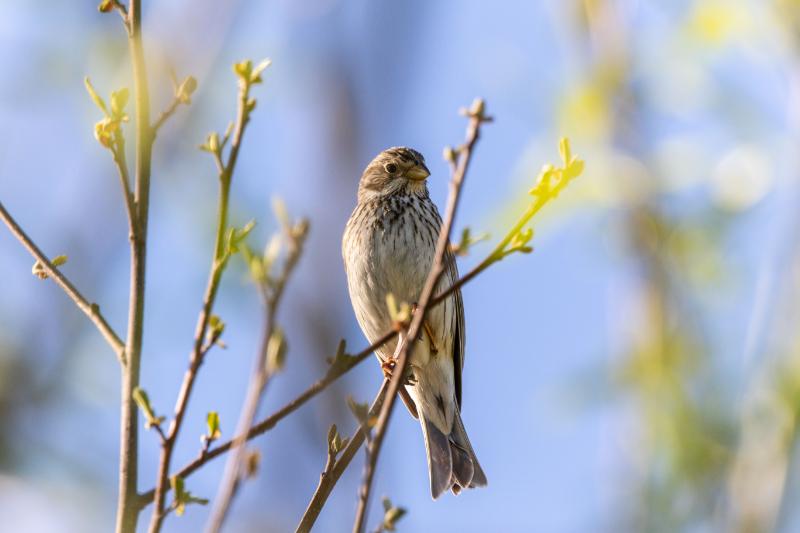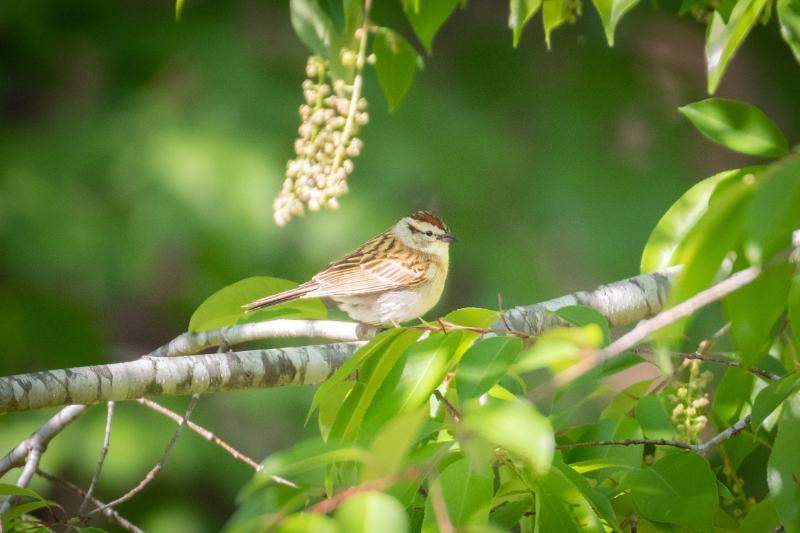Ever noticed a petite bird in North America, with a combination of brown, black, buff, and dull white plumage? It might be our interesting feathered friend, the Clay Colored Sparrow. This particular bird species is found in the prairies and brush grasslands around the Great Lakes area extending up through Canada’s central regions. Commonly mistaken for an insect due to its unique vocalizations, this fascinating bird shares close ties with the Brewer’s sparrow, field sparrow and chipping sparrow.
Identifying The Distinct Clay Colored Sparrow

With an average length of 5.5 inches and a weight under half a pound, the Clay Colored Sparrow is a tiny wonder. It displays earthy tones in its plumage such as brown featuring black streaks on their upper part, and shades of buff and dull white marking their breast and belly. The underparts maintain a solid color, whereas stripes and patterns dominate from their head down to the back.
Eye-catching Eye Pattern
A closer look reveals a unique, dark reddish-brown eye color encircled by a striped brown and white pattern. Adding to their striking looks, their beaks take on a cone shape and their forehead flaunts stripes in various shades of brown, black, and grey. Don’t overlook their fan-shaped tail, round wings or soft pinkish-grey legs either!
Unraveling The Behavior Of The Clay Colored Sparrow

The Clay Colored Sparrow’s call mimics the sound of insects and is often mistaken for them. Its eating habits are eminently gratifying. A platter of peanut kernels, safflower, millet, fruits, suet, and slices of apple makes a treat. Other delicacies include insects and a selection of seeds gathered from low trees or directly from the ground.
Understanding Breeding & Nesting Habits

Belonging to the monogamous bird category, the Clay Colored Sparrow enjoys solitary nesting. Its preferred roost: grassland lightly peppered with trees or shrubs, and on the fringes of forests. Their nests, crafted from grass, sticks, rootlets and available animal hair, nestle three to five tiny bluish-green eggs, speckled with brown and black markings. Both parents participate in the 10 to 12-day incubation process. Fancy that, the young ones spread their wings and leave the nest approximately 15 days after hatching.
Conservation Status: No Immediate Concern

Having a wide-ranging habitat across the United States, Canada, Mexico, the Caribbean, the Bahamas, Belize, Guatemala, Cuba, and the Turks and Caicos Islands, the estimated global population is under 23 million. The Clay Colored Sparrow is not deemed to be under any immediate threat of significant population decline.
Intriguing Tidbits About The Clay Colored Sparrow

- Despite prairie plowing reducing their native habitat, the clearing of forests has extended their range, making them one of the few species to benefit from human development.
- Remarkably, unlike most songbirds, these sparrows forage outside their nesting territory, thus requiring a significantly smaller territory to defend.
- A conglomerate of sparrows can be called a crew, flutter, quarrel, or ubiquity.
- High on agility, the clay-colored sparrow prefers short spurts of flight.
- Juvenile sparrows possess distinct appearances, with buff-colored face, wings, flanks, and streaked areas.
The Clay Colored Sparrow, rich in unique features and interesting behaviors, truly deserves its spot in the fascinating world of birds. So, the next time you look out for this diminutive sparrow, remember, there’s more to it than just their clay color!